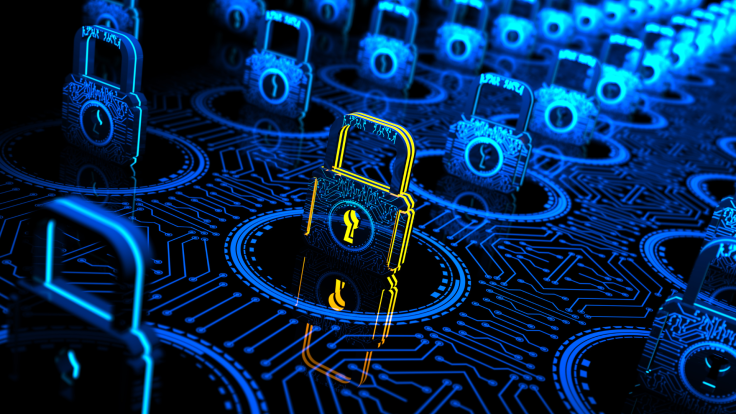Cybersecurity Architect Strengthens Federal Data Protection
Narasimha Rao Alugoju Is Using AI to Build Smarter, Adaptive Defenses for Government Systems

'In the face of evolving AI-driven threats, our federal agencies require not just robust defences, but adaptive, intelligent systems that can anticipate and neutralise attacks before they materialise,' asserts Narasimha Rao Alugoju, a prominent figure in cybersecurity and endpoint management. His words resonate with a sense of urgency that permeates Washington, where protecting sensitive government data has become a national security imperative.
As cyber threats grow increasingly sophisticated, leveraging artificial intelligence to breach even the most fortified systems, federal data protection approaches are undergoing significant changes. Alugoju, with his 18 years of experience and a track record of working with AI-driven security solutions, stands at the forefront of this transformation, changing how government agencies approach cybersecurity in an era of unprecedented digital vulnerability.
The Evolving Threat
The cybersecurity challenges facing federal agencies have escalated dramatically in recent years. According to a 2025 report by the Government Accountability Office, AI-powered attacks on government systems have surged by 175 per cent since 2023, with adversaries employing machine-learning algorithms to exploit vulnerabilities at an alarming rate.
Narasimha Rao Alugoju's work addresses this escalating threat head-on. 'Traditional security measures are no longer sufficient,' he explains. We're developing predictive systems that can analyse patterns and anticipate threats before they manifest, reducing response times by over 30 per cent in some cases.' This proactive approach has garnered attention from security experts and policymakers.
A Double-Edged Sword
Integrating AI into cybersecurity frameworks represents both a solution and a challenge. While Narasimha Rao Alugoju's systems leverage machine learning to enhance threat detection and response, critics warn of the potential risks associated with over-reliance on automated systems.
Some experts caution that, as we embed AI deeper into our defence mechanisms, we must remain vigilant about the potential for these systems to be compromised or manipulated. The stakes in federal data protection are too high for unchecked automation.
Alugoju acknowledges these concerns, emphasising the importance of human oversight in AI-driven security systems. 'Our approach combines the analytical capabilities of AI with human expertise,' he notes. 'This synergy allows us to exploit the benefits of machine learning while maintaining critical human judgment in decision-making processes.'
Compliance in the Age of AI
One of the most significant challenges in federal data protection is ensuring compliance with a constantly expanding array of regulations. Narasimha Rao Alugoju's work has been crucial in developing frameworks that meet current standards and anticipate future regulatory requirements.
'Compliance isn't just about ticking boxes,' Alugoju asserts. 'It's about creating a culture of security that permeates every level of an organisation.' His compliance-first approach has been particularly impactful in sectors like healthcare, where adherence to HIPAA regulations is a must.
Since their implementation in 2024, Alugoju's frameworks have contributed to a 40 per cent reduction in HIPAA-related data breaches across federal healthcare systems. This success has led to the adoption of similar models across other government agencies, signalling a move towards more integrated, compliance-oriented security strategies.
The Future of Federal Cybersecurity

With 2030 on the horizon, the field of federal data protection is expected to undergo further transformation. Gartner predicts that by the end of the decade, 75 per cent of government agencies worldwide will have adopted AI-driven cybersecurity measures as standard practice.
Narasimha Rao Alugoju's vision extends beyond mere technological advancement. 'The future of cybersecurity depends on creating resilient ecosystems,' he explains. 'We're moving towards a model where security is not just about defence, but about creating systems that can adapt, learn, and evolve in response to new threats.'
This approach aligns with the Federal Cybersecurity Enhancement Act of 2025, which mandates implementing adaptive security measures across all federal agencies by 2028. Alugoju's work is seen as instrumental in helping agencies meet these ambitious targets.
The Push and Pull of Progress
Despite the promise of AI-driven security solutions, challenges remain. Rapid technological advancement means that security measures must constantly evolve to avoid potential threats.
'We're in an arms race,' Narasimha Rao Alugoju acknowledges. 'As our defences become more sophisticated, so do the tactics of our adversaries. The key is to stay agile, to keep pushing new ideas, and to build strong collaboration across sectors.'
Industry leaders echo this perspective. Some note that Alugoju's work exemplifies the forward-thinking approach needed in cybersecurity. His contributions are not just technical; they change security in the digital age.
Stronger, Smarter, Safer: The Next Era of Federal Cybersecurity
As federal agencies grapple with the dual challenges of enhancing security and ensuring regulatory compliance, Narasimha Rao Alugoju's approaches offer a roadmap for the future. His integration of AI-driven threat detection, compliance-first frameworks, and adaptive security measures represents a new paradigm in federal data protection.
Reflecting on the road ahead, Alugoju remains both optimistic and pragmatic. 'The threats we face are formidable, but so are our capabilities,' he concludes. 'By continuing to collaborate and to adapt, we can create a digital environment where our nation's most sensitive data remains secure, even in the face of evolving threats.'
Every day, cybersecurity architects like Narasimha Rao Alugoju work without pause, quietly protecting the digital foundations of government institutions. In this ongoing battle against cyber threats, their efforts are a clear example of the impact of new ideas and the lasting importance of cybersecurity.
© Copyright IBTimes 2025. All rights reserved.





















